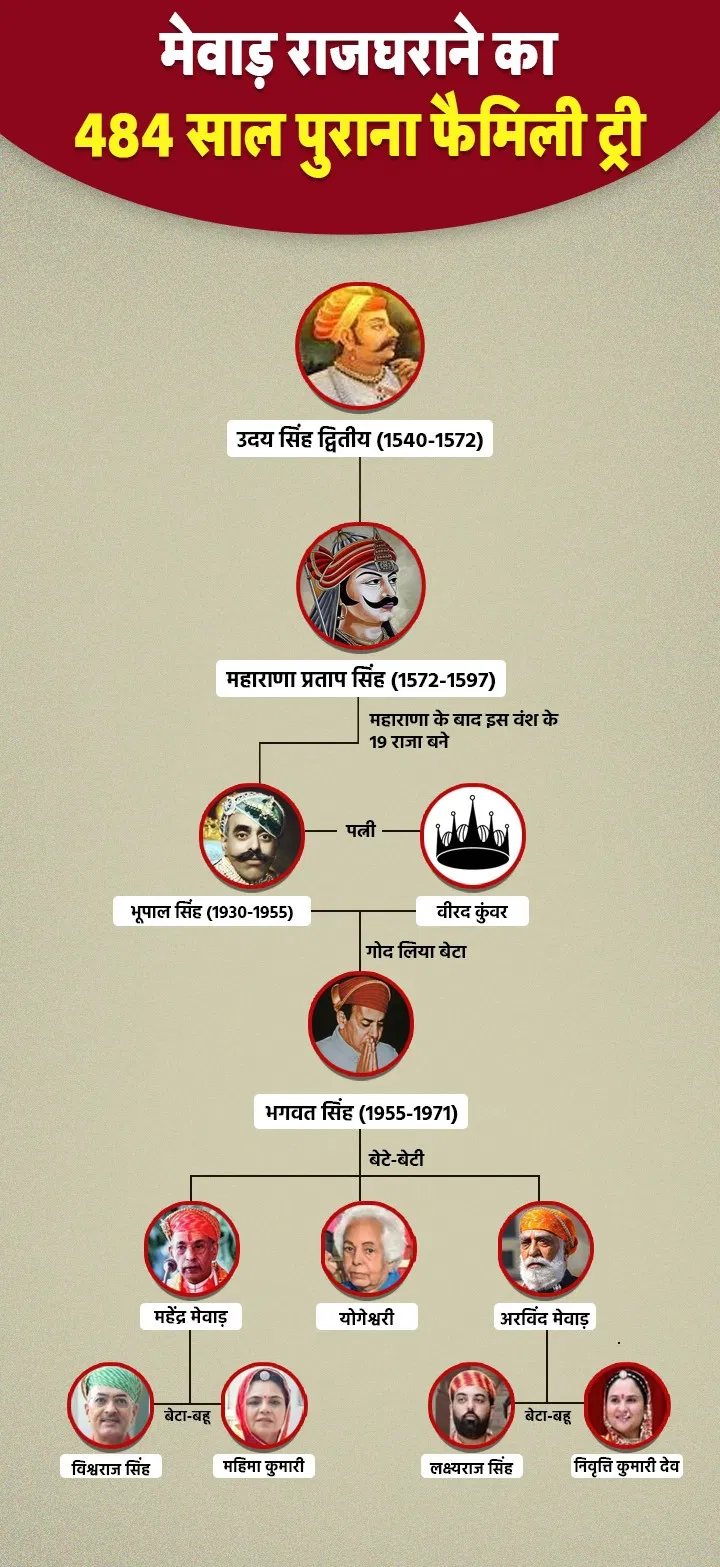- India,
- 26-Nov-2024 05:00 PM IST
Udaipur City Palace: The Mewar dynasty of Udaipur, Rajasthan is one of the most ancient and prestigious dynasties of India. This royal family, which represents brave warriors like Maharana Pratap and his precious heritage, is in the headlines these days. The reason is the dispute over the 71st throne, which is going on between the families of Arvind Singh Mewar and his elder brother Mahendra Singh.Current dispute: Lakshyaraj vs VishvrajMahendra Singh's son Vishvraj Singh was recently crowned and declared the 71st Maharana of the Mewar dynasty. At the same time, Arvind Singh claims that his son Lakshyaraj Singh is the real heir to this throne. The dispute escalated further when after the coronation, Vishvraj Singh was prevented from visiting Dhuni Mata located in the City Palace.Its history is linked to the time in 1955, when Bhagwat Singh became the Maharana of Mewar. Bhagwat Singh had started leasing out his ancestral property, with which his elder son Mahendra Singh disagreed. Mahendra Singh filed a case against his father and demanded division of property. In his will in 1984, Bhagwat Singh appointed his younger son Arvind Singh as the heir to the properties and the operator of the trust.
The glorious history of the Sisodia royal familyThe history of the Mewar dynasty begins with the Guhil dynasty, also known as the Sisodia dynasty. The origin of this dynasty is believed to be from Lord Rama's son Luv. In the third century, King Kanaksen made Valbhi Nagar his capital. The Guhil dynasty started with his son Chandrasen.In 566 AD, King Guhaditya founded the Guhil dynasty. After this, there were many prominent rulers, such as Maharana Uday Singh and Maharana Pratap. Maharana Pratap ruled Mewar from 1572 to 1597 and was known for his bravery and love of freedom.Mewar dynasty in modern timesIn 1955, Bhagwat Singh became the Maharana of the Mewar dynasty. During his reign, the commercialization of Mewar's ancestral properties began. Differences between his sons Mahendra Singh and Arvind Singh over property and the throne deepened. In his will, Bhagwat Singh disinherited Mahendra Singh from the property and appointed Arvind Singh as the director of the trust.Today, this dispute between Mahendra Singh's son Vishvraj and Arvind Singh's son Lakshyaraj has reached new heights.The legacy and future of the Mewar dynastyThe legacy of the Mewar dynasty is not limited to the throne alone. It is a symbol of a historical, cultural, and social identity. However, the current dispute has divided this glorious dynasty. This struggle for the throne is not limited to a family feud; it can also affect the reputation of Mewar's historical heritage.One lesson from the current dispute in Mewar is that family unity and respect for tradition are extremely important to maintain the dignity of historical heritage.

The glorious history of the Sisodia royal familyThe history of the Mewar dynasty begins with the Guhil dynasty, also known as the Sisodia dynasty. The origin of this dynasty is believed to be from Lord Rama's son Luv. In the third century, King Kanaksen made Valbhi Nagar his capital. The Guhil dynasty started with his son Chandrasen.In 566 AD, King Guhaditya founded the Guhil dynasty. After this, there were many prominent rulers, such as Maharana Uday Singh and Maharana Pratap. Maharana Pratap ruled Mewar from 1572 to 1597 and was known for his bravery and love of freedom.Mewar dynasty in modern timesIn 1955, Bhagwat Singh became the Maharana of the Mewar dynasty. During his reign, the commercialization of Mewar's ancestral properties began. Differences between his sons Mahendra Singh and Arvind Singh over property and the throne deepened. In his will, Bhagwat Singh disinherited Mahendra Singh from the property and appointed Arvind Singh as the director of the trust.Today, this dispute between Mahendra Singh's son Vishvraj and Arvind Singh's son Lakshyaraj has reached new heights.The legacy and future of the Mewar dynastyThe legacy of the Mewar dynasty is not limited to the throne alone. It is a symbol of a historical, cultural, and social identity. However, the current dispute has divided this glorious dynasty. This struggle for the throne is not limited to a family feud; it can also affect the reputation of Mewar's historical heritage.One lesson from the current dispute in Mewar is that family unity and respect for tradition are extremely important to maintain the dignity of historical heritage.

